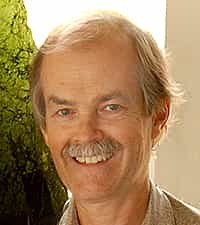Gems and Minerals Galore!
Part of George's job at the Museum is to take care of the Hall of Minerals and Gems. It is a glittering cavern of gems and minerals on display. There are dazzling gems with beautiful shapes and colors, including large sapphires, emeralds, and 260 colored diamonds. Some of the shapes are made by cutting and polishing, but many of the beautiful shapes were formed by nature. It is the home of the famous Star of India, a rare sapphire with a six-rayed star on its face. This precious 563 carat gem is as big as a golf ball. It is the largest gem-quality star sapphire in the world. The hall also has a big piece of polished green jade the size of a bed. There are also petrified-wood tree stumps, a giant topaz, and white and amethyst quartz crystal clusters the size of chairs. What you see in the Hall is only the tip of the iceberg. Most of the minerals are tucked away in the Museum's collection. It has over 114,000 gems and minerals from around the world. Every year George visits mineral shows to collect new samples for the ever-expanding collection.
Hometown: New York City
Education: Ph.D., Princeton University
Job: Curator, Earth & Planetary Sciences at the American Museum of Natural History
Known for: discovering a huge jade deposit in Guatemala
Cool fact: George can tell where a piece of Guatemalan jade came from by looking at it under a scanning electron microscope.

George studies diamonds because they are:
the hardest known material
like space capsules for deep Earth minerals
both
Correct!
Diamonds grew billions of years ago in rocks deep inside the Earth. They often trap mineral grains from their surroundings. The hard diamond protects these mineral grains, which can tell us about the Earth's deep interior.
In Guatemala, he was part of a team that discovered a long-lost source of:
diamonds
jade
rubies
Correct!
George has researched diamonds and rubies, but his expedition in Guatemala focused on jade. He and a team of scientists and local jade hunters found the source of the rare jade that was used by ancient Mesoamerican cultures.
George spends all his time in the field, so he does not work in the lab.
Fiction
George spends a lot of time in the lab, examining the rocks he collects in the field. He also does experiments, using special equipment to create rocks at high pressures.
Imagination is key for geologists. I try to imagine what the Earth is like deep inside, based on the evidence that I find on the surface of the Earth.

George Harlow, Earth scientist




 Biodiversity
Biodiversity
 Brain
Brain
 Genetics
Genetics
 Marine BiOLogy
Marine BiOLogy
 MicrobiOLogy
MicrobiOLogy
 PaleontOLogy
PaleontOLogy
 ZoOLogy
ZoOLogy
 AnthropOLogy
AnthropOLogy
 ArchaeOLogy
ArchaeOLogy
 Astronomy
Astronomy
 Climate Change
Climate Change
 Earth
Earth
 Physics
Physics
 Water
Water
